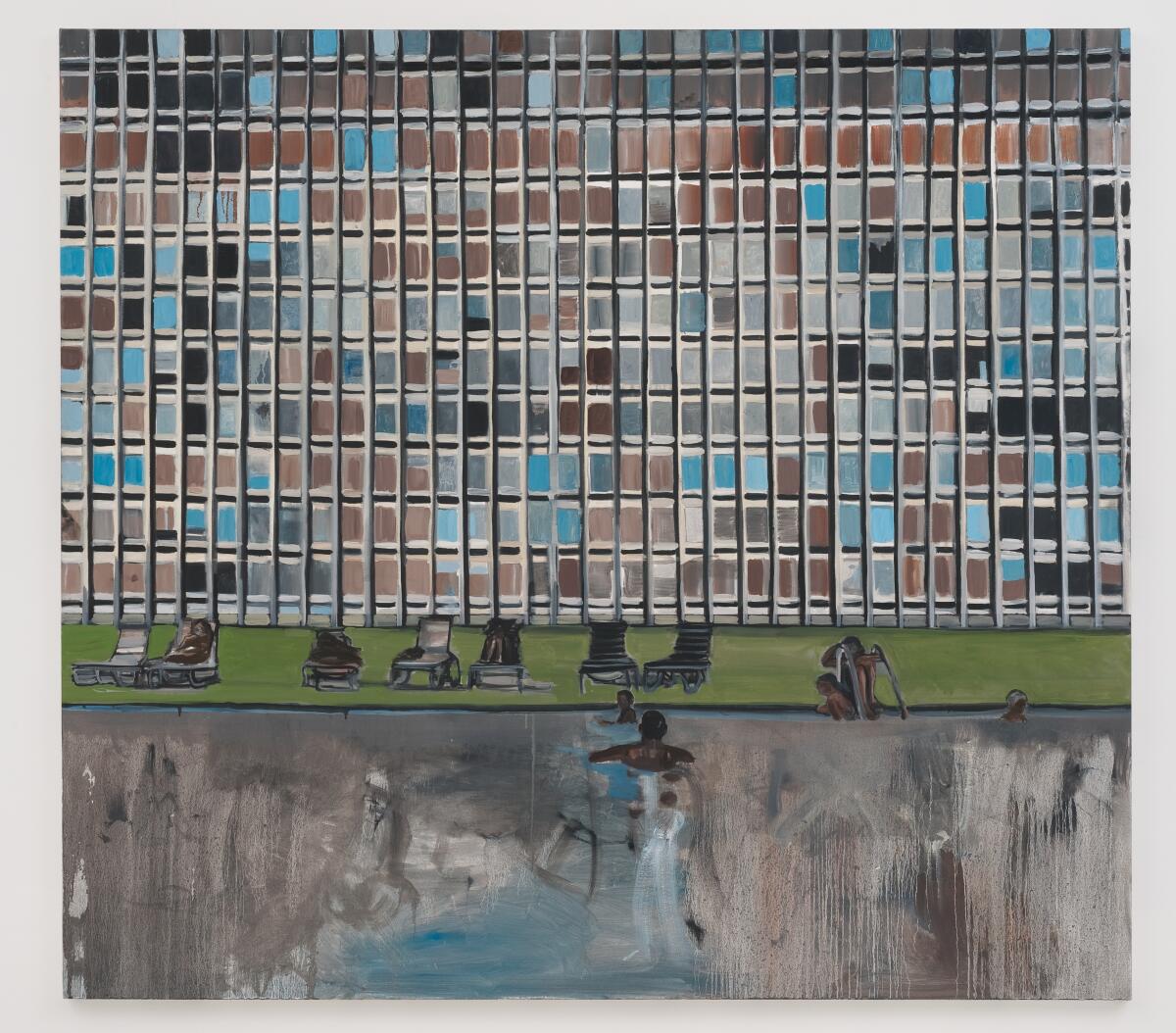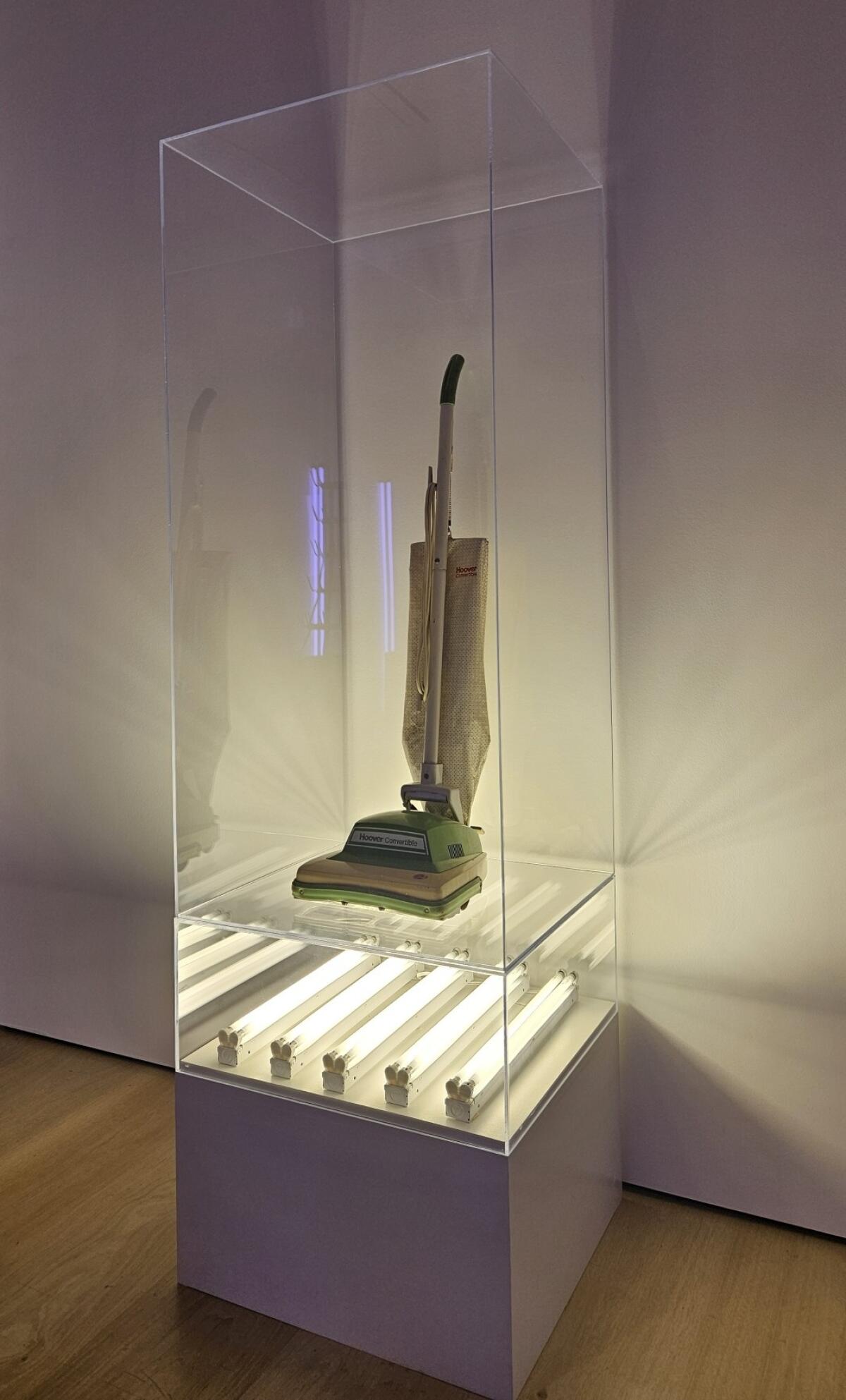Cameron Crowe eulogizes rock’s golden age in ‘Uncool’ memoir: Review
Book Review
The Uncool
By Cameron Crowe
Avid Reader Press / Simon & Schuster: 336 pages, $35
If you buy books linked on our site, The Times may earn a commission from Bookshop.org, whose fees support independent bookstores.
Cameron Crowe’s charming new memoir is an elegy for a lost time and place, when rock ‘n’ roll culture was still a secret handshake and the music press wasn’t just another publicity tentacle for giant corporations to shill their product (excepting the fine writers at the Los Angeles Times, of course). In fact, the “music press” as a concept is vestigial at best now, the internet having snuffed it out, but when Crowe was writing his features in the 1970s, primarily for Rolling Stone, only a handful of print publications allowed fans to glean any insight about the musicians they admired or to even see photos of them.
Crowe was one of those fans. He spent his adolescence in Palm Springs, a town with “a thousand swimming pools and the constant hum of air conditioners,” in a basement apartment near the freeway. A loner and a nerd raised by a former Army commanding officer and a strong-willed, whip-smart mother who had firm ideas about how young Cameron should conduct himself. Any humiliations Crowe might have suffered as an uncertain teen were for his mother merely speed bumps on the journey to self-actualization, ideally as a lawyer. She had a wealth of Dale Carnegie-esque aphorisms to pump up her young charge, such as “put on your magic shoes,” or “Mind is in every cell of the body. Thoughts are everything.”
“She hated rock and roll,” Crowe writes. “Rock was inelegant, and worse, obsessed with base issues like sex and drugs.”

(Avid Reader Press / Simon & Schuster)
As we have seen in the 2000 film “Almost Famous,” Crowe’s autobiographical account of his early years, young Cameron cared little about sex or drugs, music being his only lodestar. When his family relocated to San Diego, Crowe found himself in a conservative town with virtually no outlets for music except the local sports arena, where he witnessed his first big-time rock show accompanied by his mom: a post-comeback Elvis, knee deep in Vegas schmaltz, bounding onstage “in a glittering white jumpsuit …. striking karate poses.” A week later, mom and son witnessed Eric Clapton, full of fire with his band Derek and the Dominos. “I understand your music,” Alice Crowe finally conceded. “It’s better than ours.”
San Diego had little pockets of cultural insurrection that Crowe sought out like a moth to flame. When his sister Cindy nabbed a job with the local underground paper called the Door, Crowe wedged his way in, not because he had any interest in radical politics: his hero Lester Bangs, the iconoclastic rock critic whom he had read in Rolling Stone and Creem, had contributed work there.
As he does so often in this book, Crowe pulls the reader in with his keenly observant eye that would serve him so well in his second career as a filmmaker. The Door’s editor Bill Maguire “had a healthy girth, an open shirt with a silver pendant, and rippling brown hair. The kind of character Richard Harris used to play, most of the time with a goblet in his hand.” Maguire and his staff are hippie idealists, wary of sullying their political mission with trivialities like record reviews. But Crowe talks Maguire into letting him weigh in on a James Taylor record, and Crowe’s career is launched. He is 14.

Cameron Crowe, who started his music journalism career as a teen, pulls the reader in with his keenly observant eye that would serve him so well in his second career as a filmmaker.
(Neal Preston)
Crowe would encounter no such resistance as he worked his way into Rolling Stone, whose owner Jann Wenner gladly accepted record company advertising to keep his counterculture publication afloat. Crowe had found his professional home, filing long, admiring features with some of the era’s most important acts.
Crowe’s Dec. 6, 1973, cover story on the Allman Brothers was meant to atone for an earlier profile on the band written for the magazine by Grover Lewis, a brutally honest and often unsavory portrait. Crowe’s do-over feature, in contrast, is anodyne and respectful; the band is even given room to refute some of the facts Lewis included in his story.
Far more interesting is the stuff Crowe left out of that piece that he has now put into his memoir. To wit: Shortly after their perfectly lovely afternoon together, Gregg Allman, clearly in a drug-induced psychotic state, calls Crowe to his hotel room and demands that Crowe physically hand over the tapes of their interview, or else face legal consequences. “How do I know you aren’t with the FBI?” Allman asked Crowe. “You’ve been talking to everybody. Taking notes with your eyes.” It’s hard to imagine Crowe’s mentor Bangs not leading with that scene.
Crowe was covering rock music at a time when publicists had not become the human guardrails they are today, insulating their clients from anything that doesn’t celebrate them. There were no record company representatives present when Crowe sat in the lobby of an El Torito restaurant in Mission Hills with Kris Kristofferson, whose wife Rita Coolidge was waiting for the singer with her family in the bar (underage Crowe wasn’t allowed inside). Or when Crowe went long with David Bowie, interviewing him on and off for a year and a half while Bowie was making his 1976 album “Station to Station.”
Camped out with his wife Angie in a Beverly Hills mansion on North Doheny Drive, Bowie is affable and candid, despite subsisting on a diet of red peppers, milk and cocaine. “Over the months, I became acclimated to the normality within his insulated lifestyle,” Crowe writes. “Oh, sometimes there might be a hexagon drawn on the curtains in his bedroom or a bottle of urine on the windowsill.” While showing Crowe the indoor swimming pool, Bowie remarks that the only problem with the house “is that Satan lives in that swimming pool.”
Such weird scenes inside this once-mysterious world have been totally effaced, now that every musician can curate his own image on social media. Reading “The Uncool,” which touches on Crowe’s Hollywood career without delving too deep into it, reminds us of what has been lost, the myths and mystique that fueled our rock star fantasies and gave the music an aura of magic.
Weingarten is the author of “Thirsty: William Mulholland, California Water, and the Real Chinatown.”





